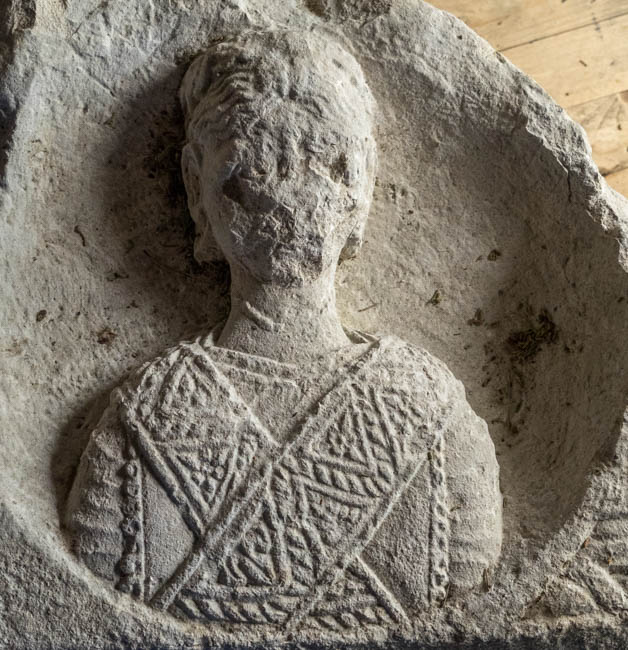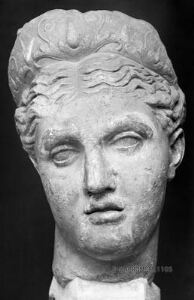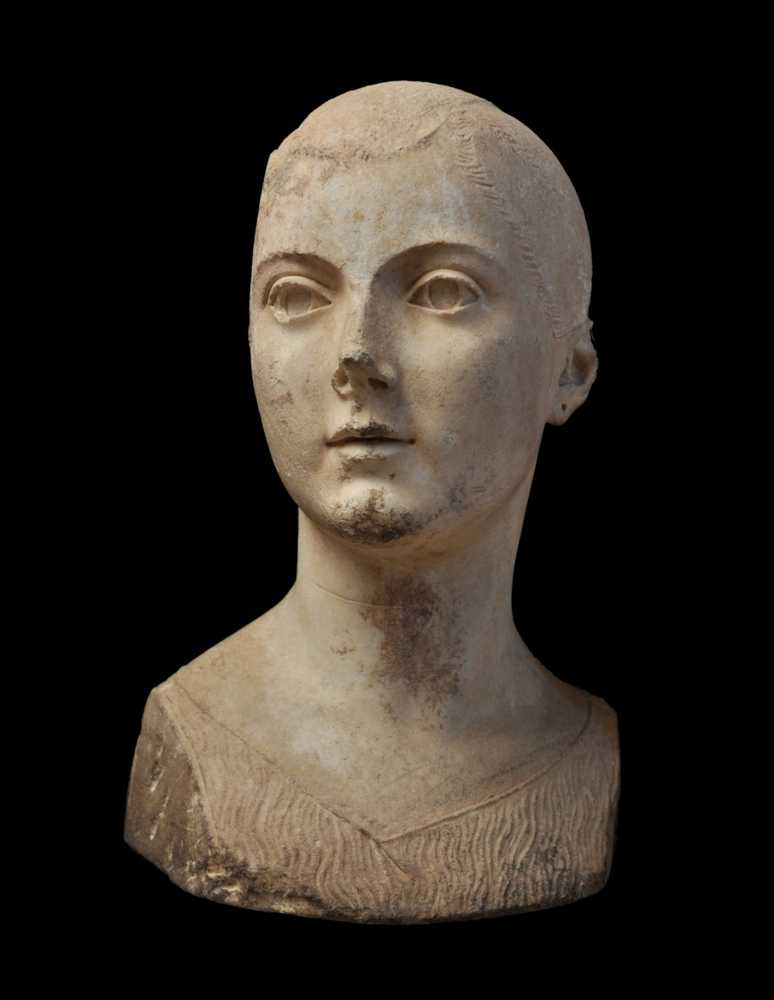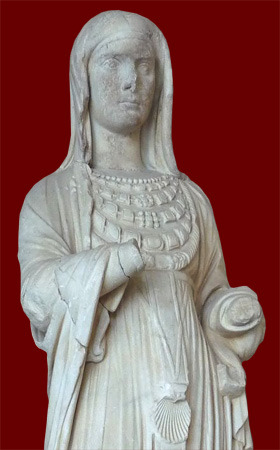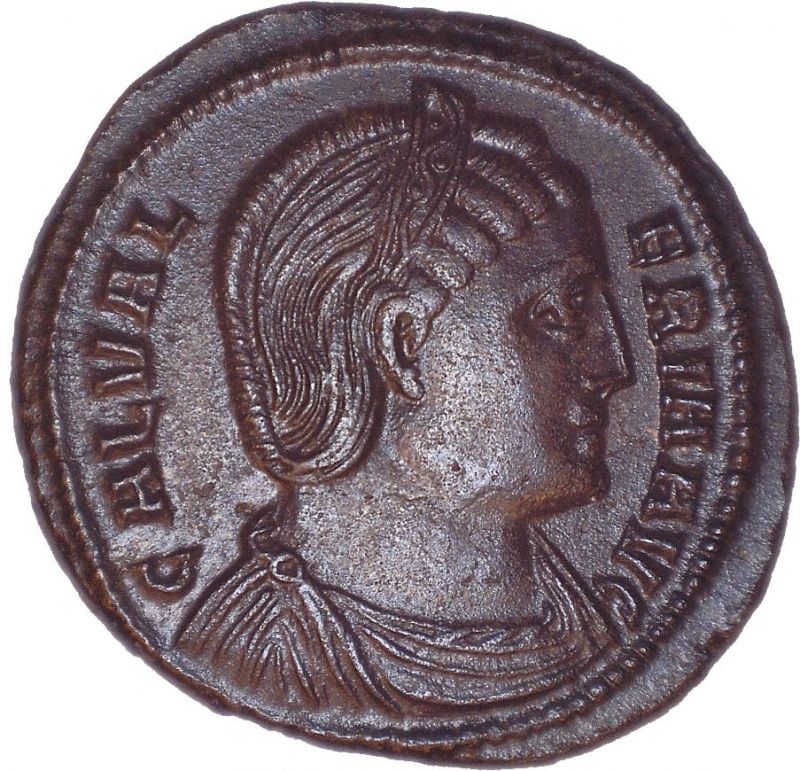A few representations of the goddess Aphrodite of the Hellenistic times.






Terracotta bust of a woman (Aphrodite?) wearing a necklace with the Heracles Knot, diadem with pendants and two armlets. Figurine was found in Myrina, Asia Minor, is dated to the 2nd C BCE.
In Louvre Inv. no. Myrina 661
see also https://www.photo.rmn.fr/archive/00-004283-2C6NU04H6D_L.html



Terracotta bust of a woman (Aphrodite?) wearing a necklace with the Heracles Knot, diadem with pendants and two armlets. Figurine is signed by the sculptor – Agestratos (lived 2nd-1st C BCE); was found in Myrina, Asia Minor.
In Louvre Inv. no. Myr 35
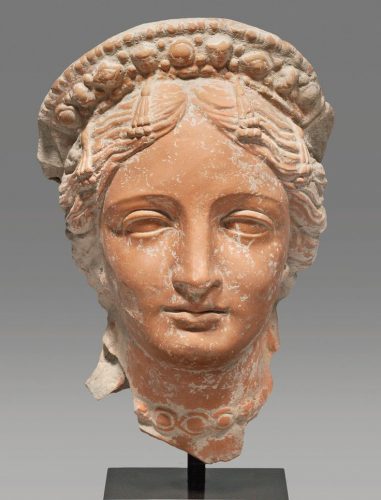

Sold by Phoenix art gallery (page of the item doesn’t exist anymore https://phoenixancientart.com/work-of-art/hellenistic-ceramic-head-of-aphrodite/)
Description from Flickr
“A Magnificent Hellenistic Terracotta Head of Aphrodite
Black Sea Region, ca. 3rd-1st century B.C.E., H. 22.8 cm.
This majestic head of female figure possesses a remarkable presence, which is accentuated by well-preserved surface details. Eyes, nose, and lips are sensitively modeled and embody the grace and grandeur fitting for the representation of a goddess rather than a mortal woman. The figure is crowned by a richly decorated diadem with four multiple chain pendants, each chain terminating in round beads. She is additionally adorned with a necklace, and would have worn metal earrings. The [stephane] diadem – representing one made of gold embellished with semi-precious or precious stones – is decorated with the heads of figures alternating with cabochon-cut stones secured in round or diamond-shaped settings. Use of gold as a framework for setting precious stones is a technique practiced in the later Hellenistic period. The style of the diadem and necklace, particularly the pendant decorations of the diadem point to jewelry types known from northern Greece and the area of the Black Sea.
The diadem crowning this stately figure, as well as her similarly fashioned necklace and the overall richness of ornament, mark her as the representation of a divinity, most likely Aphrodite. Feminine charm, grace and delicacy could not find a more perfect expression than that embodied in this representation of the goddess. The sculpture’s softly modeled face, framed by wavy locks of hair, possesses a serene and outward-looking gaze. Her hair parted above the forehead is held in place by the diadem, with thick, softly modeled tresses flowing back at the sides and covering the tips of the ears. The nose is delicate and well-shaped, the forehead is flat, and the eyes, not deeply set nor wide open, contribute to the face’s dreamy countenance. The modeling of the lips adds to this overall softness of expression. One of the closest parallels for this sculptural type of Aphrodite wearing a diadem can be found in the well-preserved, famous sculpture of a semi-draped Aphrodite known as the Aphrodite of Capua, now in the National Archaeological Museum of Naples. An additional, terracotta example of Aphrodite wearing a diadem, and likely based on a similar prototype as the Capua sculpture, can be found in the Staatliche Museum in Berlin.”
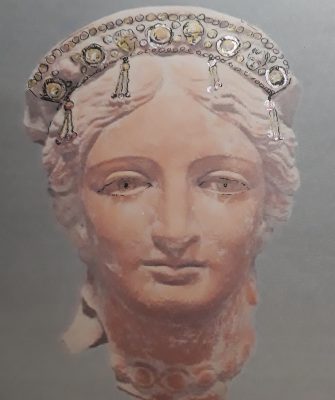
For the examples of the headbands with pendants from classical and Hellenistic Greece see my post >>

Terracota head of Aphrodite from Corinth, made about 300 BCE. She wears a stephane diadem decorated with tendrils.
Read more >> https://colorsandstones.eu/2022/07/14/portrait-of-a-woman-stephane-diadem-with-tendril-motif-d-b/



